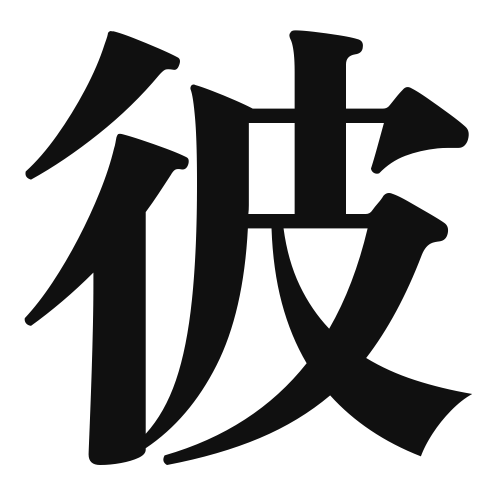1. Overview of Meaning
The kanji “彼” (kare) means “he” or “him” in Japanese. It is used to refer to a male person, often in a casual or familiar context.
2. Formation and Radical
The kanji “彼” is a phonetic compound (形声文字) that combines the radical for “person” (亻) on the left side with the phonetic component “可” (ka) on the right side. The radical indicates that the character relates to a person.
3. Examples of Usage
Common words and phrases that include “彼” are:
- 彼氏 (かれし, kareshi) – boyfriend
- 彼女 (かのじょ, kanojo) – girlfriend
Example sentences in daily conversation:
- 彼は学生です。 (かれはがくせいです。) – He is a student.
- 彼女はとても優しいです。 (かのじょはとてもやさしいです。) – She is very kind.
4. Synonyms and Antonyms
Similar kanji with related meanings include:
- 男 (おとこ, otoko) – man (refers to a male in general, not specifically “he”)
- 彼方 (あなた, anata) – you (used to refer to the listener, contrasting with “彼”)
Antonyms include:
- 彼女 (かのじょ, kanojo) – she or her (referring to a female person)
5. Cultural and Historical Background
The kanji “彼” is often used in Japanese culture to denote relationships, especially in the context of romantic partnerships. It appears in various proverbs and idiomatic expressions, such as:
- 彼の言葉を信じる (かれのことばをしんじる) – to believe his words.
This reflects the importance of trust and communication in relationships within Japanese culture.
